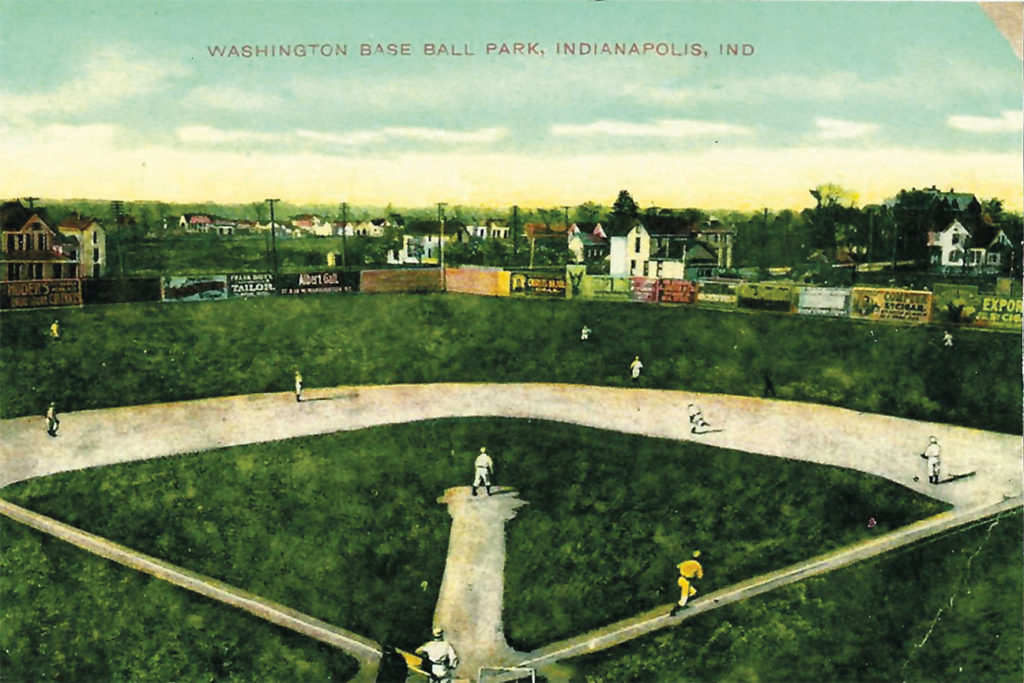
Michael Bushnell
Publisher
This week, we throw a curveball into our series and bounce back into the world of minor league ball yards with a trip to Indianapolis, Indiana and the storied Washington Park.
The original Washington Baseball Park was built in Indianapolis, Indiana in 1900 at 3001 E. Washington Street, at the southwest corner of Washington and Gray Street.
Home to the minor league Indianapolis Indians of Baseball’s American League, the all-wood park, according to an article in the Indianapolis News on March 27, 1900, had a temporary look to it as wood from an older ballpark had been transported to the site and used in construction of the new park. In 1902 the Indians moved into the park and stayed for three seasons.
In 1905 the team moved to what was then referred to as either Washington Park or Washington Baseball Grounds (known today as West Washington Street Park) just west of the White River. The new stadium had a capacity of a scant 4,000 fans but in 1909, the park was completely rebuilt and the capacity was enlarged to roughly 20,000.
It also boasted the largest playing surface in the minor leagues and larger than many of the major league stadiums that were in use at the time. The stadium was home to the Negro National League team the Indianapolis ABC’s from 1920 through the 1926 season when they had a 43-46 finishing.
Washington Park, the second version, hosted its last game on August 19, 1931. Dismantling of the stadium had already begun, however, and the light towers and parts of the bleachers had already been moved to the new Perry Stadium for use starting with the 1932 season.
The second Washington Park is now the site of the Indianapolis Zoo, which was originally constructed on April 18, 1964 at 3130 E. 30th Street, but moved to the site of the second Washington Park in 1988.
The only remaining vestige of the old ballpark is a plaque and marker that was placed in the Indianapolis Zoo on July 22, 2011.

















